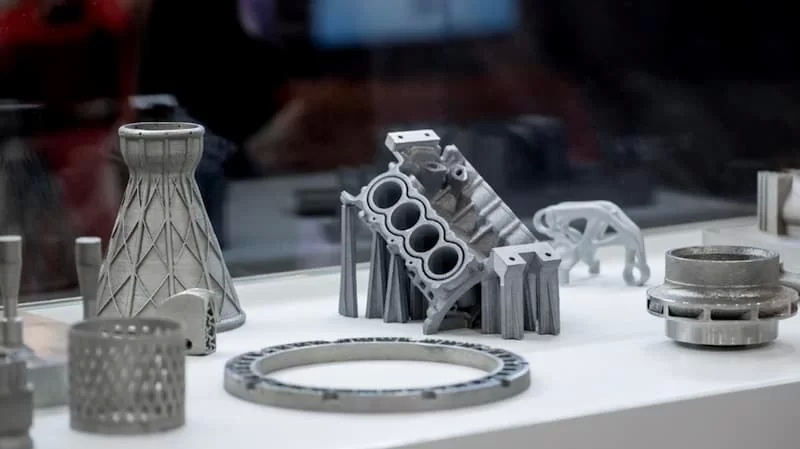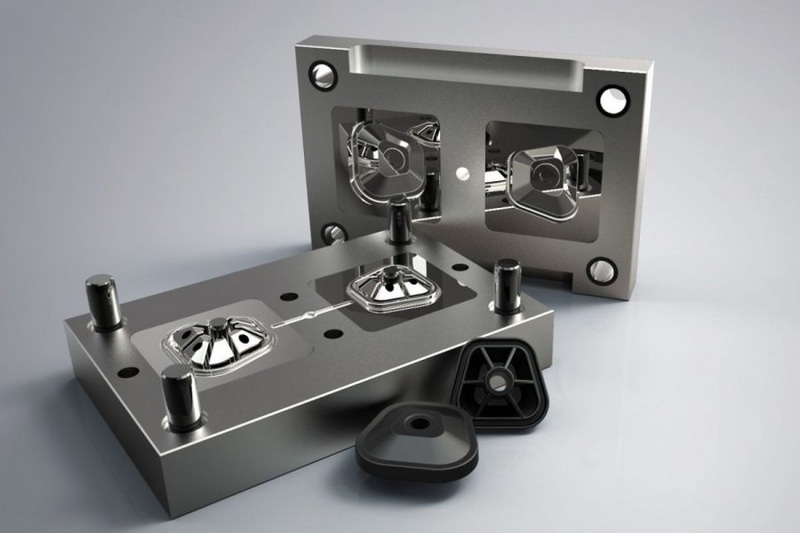
Views: 222 Author: Amanda Publish Time: 2025-07-24 Origin: Site








Content Menu
● The Essence of Rapid Prototyping in Modern Industry
● Understanding Customer-Centricity in Prototyping
● Core Services Provided by a Leading Rapid Prototyping Factory
>> 3D Printing (Additive Manufacturing)
>> OEM Services
● How a Customer-Focused Approach Transforms Project Success
● End-to-End OEM Services for Overseas Clients
● Advanced Technologies Empowering Rapid Prototyping
>> Industrial-Grade 3D Printers
>> Automated Quality Inspection
>> Smart Manufacturing and Automation
● The Workflow: From Design to Delivery
>> Step 1: Requirement Consultation
>> Step 2: Quotation and Order Confirmation
>> Step 4: Prototype Fabrication
>> Step 5: Post-Processing and Finishing
>> Step 7: Packaging and Shipping
>> Step 8: After-Sales Support
● Quality Control and Confidentiality in Rapid Prototyping
● The Value of Communication and Support
● FAQs
>> 1. What industries benefit most from rapid prototyping?
>> 2. How quickly can I expect my prototypes or parts to be delivered?
>> 3. What file formats are accepted for rapid prototyping projects?
>> 4. How does a customer-centric prototyping partner safeguard my designs?
>> 5. Can I request changes or optimizations after prototyping begins?
In today's highly competitive and fast-evolving industries, rapid prototyping has become the heartbeat of innovation and product development. For brands, wholesalers, and manufacturers seeking to remain ahead, choosing a customer-centric rapid prototyping partner is essential. This comprehensive guide explores what clients can expect from a truly client-focused rapid prototyping provider in China, delves deep into the key services, illustrates production processes, and demonstrates why customer service is just as crucial as technical capability.

Rapid prototyping has reshaped how product development cycles run across numerous sectors. It allows businesses to translate concepts into physical models quickly, which can then be analyzed, tested, and refined. Speed and accuracy are paramount, as the demands of market competition leave little room for prolonged design phases.
Not only does rapid prototyping accelerate innovation by compressing the development timeline, but it also mitigates risk by identifying potential design flaws before mass production. This early detection process helps avoid expensive production errors, reduces waste, and ultimately improves the overall product quality.
Furthermore, rapid prototyping supports customization, enabling companies to produce unique or small-batch parts tailored to specific customer needs or market trends—crucial in industries like automotive, consumer electronics, and medical devices where personalization is increasingly valued.
At the heart of successful rapid prototyping lies customer-centricity. This means the service provider prioritizes the customer's unique project requirements, challenges, and long-term goals throughout the entire process.
A customer-centric rapid prototyping partner exhibits key qualities such as:
- Clear and consistent communication: Transparent dialog at every stage prevents misunderstandings, ensuring all expectations are aligned.
- Process transparency: Clients receive detailed insights on pricing models, lead times, potential risks, and milestones, allowing informed decision-making.
- Agility and flexibility: Whether modifications are needed midway or urgent projects arise, the partner adapts without compromising quality.
- Ongoing support: Beyond just delivering prototypes, the partner provides troubleshooting, technical advice, and scalable manufacturing solutions as projects evolve.
The combination of these factors turns a regular service provider into a trusted extension of the client's development team.
To meet diverse client needs in rapid prototyping and small to medium volume production, a leading factory provides an integrated suite of manufacturing capabilities, including but not limited to:
Computer Numerical Control (CNC) machining remains one of the most versatile and precise manufacturing methods. It allows for complex parts to be cut from a wide range of materials—everything from aluminum and stainless steel to engineering plastics. High-speed CNC centers, equipped with multi-axis capabilities, tailor every component to exact specifications, achieving tight tolerances essential for functional prototypes.
While prototyping focuses on one-off models, many customers require scaled production that bridges the gap between prototypes and full mass production. Precision batch production answers this need by combining rapid turnaround with consistent quality, making it ideal for pilot runs, market testing, or specialized product lines.
Lathe turning complements milling with efficient manufacturing of round or cylindrical parts. Whether shafts, bushings, or threaded components, turning machines provide smooth finishes and dimensional accuracy. For industries like automotive or electronics, these parts form critical mechanical interfaces.
Sheet metal manufacturing is crucial for making enclosures, chassis, brackets, or housings. It involves cutting, bending, punching, and assembling metal sheets—usually steel, aluminum, or copper alloys. Rapid prototyping partners integrate computerized turret punches and bending machines with a highly skilled workforce, enabling design complexity without delays.
Additive manufacturing transforms rapid prototyping by freeing designers from traditional tooling constraints. Utilizing a variety of printing technologies like SLS, SLA, or metal powder bed fusion, 3D printing rapidly produces complex shapes, internal cavities, or lightweight lattice structures. It also shortens iteration cycles, often generating functional prototypes within days.
For customers with high volume or injection molding needs, in-house mold production capabilities are indispensable. The process starts with prototype evaluation, followed by tooling design and manufacture of molds using hardened steel or aluminum. Quick mold turnaround times allow seamless transfer from prototype to production, ensuring design consistency.
More than prototyping or batch production, original equipment manufacturing (OEM) services integrate multiple manufacturing disciplines into end-to-end solutions. This includes component fabrication, assembly, quality assurance, packaging, and logistics. OEM service flexibility lets overseas clients streamline their supply chain by partnering with a single factory responsible for multiple deliverables.

Choosing a customer-centric rapid prototyping partner fundamentally alters how development projects unfold in positive ways. Clients benefit from:
- Tailored solutions: Rather than rigid templates, projects receive custom approaches based on complexity, budget, and intended application.
- Responsive project management: Dedicated project managers constantly monitor progress, identify risks early, and realign priorities when necessary.
- Proactive collaboration: The partner's engineering team often suggests design for manufacturability (DFM) improvements to optimize costs and performance before cutting metal or printing layers.
- Enhanced trust and transparency: Regular updates and feedback channels keep clients reassured and involved, preventing surprises and fostering mutual respect.
This alignment between the client's vision and production reality significantly elevates the chances of on-time product launches with functional, market-ready designs.
Global brands and importers frequently face challenges in overseas project coordination, such as communication barriers, delays, and unfamiliar quality standards. A customer-centric rapid prototyping partner addresses these by:
- Providing bilingual or multilingual support staff to eliminate language obstacles
- Offering clear documentation on quality standards, certifications, and export regulations
- Implementing integrated supply chain management systems to ensure components, packaging, and shipping schedules are synchronized seamlessly
- Customizing business models—whether small orders, repeat runs, or private labeling—to meet varying client scales and markets
- Using trusted international logistics partners to guarantee secure, timely delivery along with proper customs handling
Such comprehensive OEM services simplify overseas clients' operations and reduce costs by consolidating multiple stages under one reliable factory roof.
State-of-the-art manufacturing technology drives the rapid prototyping industry forward, enabling ever-faster, more accurate production.
Five-axis and even six-axis CNC machining centers can handle complex geometries in a single setup, greatly improving precision while reducing turnaround times.
Industrial additive machines enable diverse material usage, including engineering plastics, resins, and metal alloys. Fast layer deposition combined with post-processing techniques results in highly functional prototypes even for demanding applications.
Cutting-edge metrology equipment such as coordinate measuring machines (CMMs), laser scanners, and automated visual inspection systems help identify deviations early in the process. Artificial intelligence is also increasingly used to analyze inspection data and improve yield rates.
Integration of robotics, conveyor automation, and digital monitoring systems accelerates prototyping workflows, ensuring consistency and reducing human error. Such automation especially benefits clients with frequent or large-volume orders.
A well-defined, transparent workflow assures customers their project will proceed efficiently:
Initial technical discussions gather all project parameters, including materials, design files, budget, deadlines, and special requests. The partner may provide design advisories to enhance manufacturability or reduce costs.
Clients receive detailed quotes covering pricing, estimated lead times, raw materials, finishing options, and potential risks. Upon agreement, contracts and necessary confidentiality agreements are signed.
Experienced engineers review CAD models, analyze for potential fabrication challenges, verify tolerances, and prepare machine tool paths or print files. Design adjustments may be suggested.
Parts are created using the selected technologies—whether machining, additive manufacturing, turning, or sheet metal processing—adhering strictly to client specifications.
Surface treatments including polishing, anodizing, painting, or assembly are performed to deliver finished prototypes that accurately reflect final product appearance and performance.
Comprehensive inspections measure dimensions, test functionalities, and verify material properties. Documentation and reports are made available to the client.
Products are carefully packaged to prevent damage and shipped worldwide using reliable carriers, providing tracking information and assistance with customs paperwork.
A dedicated support team remains accessible to answer client inquiries, facilitate repeat orders, and implement design upgrades as needed.
Quality assurance is non-negotiable for a trustworthy prototyping partner. This includes:
- Full traceability of parts through batch numbers and detailed inspection records
- Use of certified, high-grade raw materials to guarantee prototype longevity and accuracy
- Multiple checkpoints during and after manufacturing to catch defects early
Confidentiality of client data and intellectual property is maintained via strict NDAs, secure data handling protocols, and controlled access to sensitive files and designs.
An excellent customer-centric partner understands that manufacturing excellence is paired with superior communication. Clients expect:
- Proactive and transparent updates at key milestones
- Single-point contact for streamlined communication
- Detailed reports and documentation tailored to client requirements
- Open channels for feedback and rapid resolution of issues
Such attentive service fosters trust and long-lasting partnerships beyond one-off projects.
Partnering with a customer-centric rapid prototyping factory delivers a strategic advantage for overseas brands, wholesalers, and manufacturers wanting to innovate efficiently and with confidence. By combining advanced manufacturing technologies, transparent workflows, flexible OEM services, and attentive client support, these partners help accelerate product development, improve quality, and reduce risk. Selecting the right rapid prototyping partner is not merely about machinery and processes—it reflects a shared commitment to your success, agility, and growth.

Rapid prototyping plays a critical role in aerospace, automotive, medical devices, consumer electronics, industrial machinery, and more. Any sector that values quick design iterations and precision can benefit.
Lead times range from 2-7 days for simple prototypes via CNC machining or 3D printing, to several weeks for more complex multi-part assemblies or batch production.
Most rapid prototyping providers work with common CAD formats such as STL, STEP, IGES, DWG, and DXF. It's advised to confirm with your chosen factory early in the quoting stage.
Confidentiality is maintained through NDAs, secure digital communication, restricted design access, and robust data management practices throughout the project.
Yes, a customer-centric partner will accommodate reasonable design changes, process optimizations, or order adjustments when possible, keeping you informed about impacts on lead time and cost.
content is empty!
Top 5 Axis CNC Machining Manufacturers and Suppliers in Norway
Top 5 Axis CNC Machining Manufacturers and Suppliers in Finland
Top 5 Axis CNC Machining Manufacturers and Suppliers in Greece
Top 5 Axis CNC Machining Manufacturers and Suppliers in Sweden
Top 5 Axis CNC Machining Manufacturers and Suppliers in Turkey
How Vacuum Mold Casting Compares to Silicone Mold Casting for Precision Parts
Vacuum Mold Casting vs. Resin Casting: Key Differences You Should Know
Vacuum Mold Casting vs. 3D Printing: Choosing the Best Rapid Prototyping Method
Best Vacuum Mold Casting Services for Precision Manufacturing in 2025
Top Vacuum Mold Casting Manufacturers Delivering High-Quality Prototypes